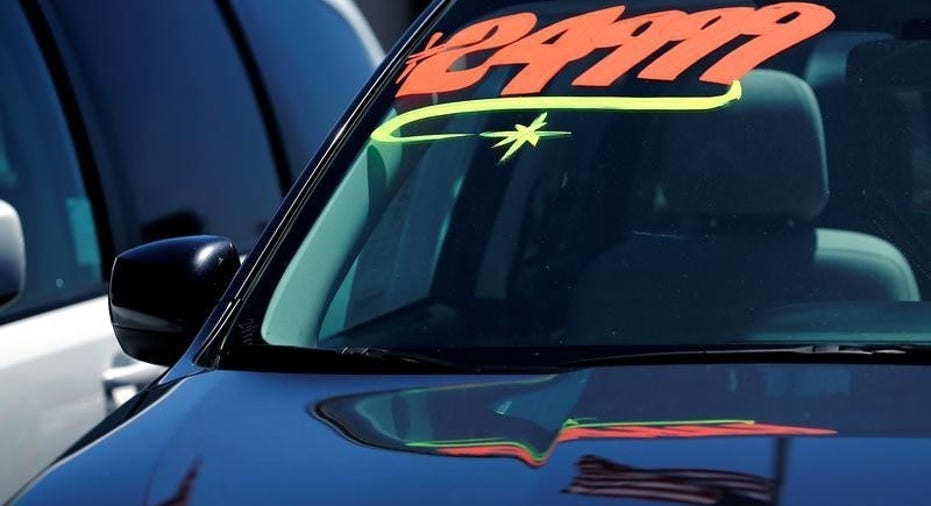GM, Fiat Chrysler Sales Slip in October Amid Fewer Selling Days

New car sales declined broadly in October, hurt by fewer selling days compared with a year earlier and by falling demand for passenger cars.
The nation's largest auto suppliers disclosed single-digit percentage declines from a year ago, fueled by a recent trend of weaker demand for sedans, coupes and other passenger vehicles.
A complete picture for the month wasn't available because some companies were still tallying results. Ford Motor Co. also delayed release of its sales due to a fire at its headquarters on Monday.
Among the top four sellers: General Motors Co. said its sales overall slipped 1.7% compared with the same time last year, a reflection of its moves to pare less profitable sales to fleet buyers like car rental customers. Fiat Chrysler Automobiles NV reported sales tumbled 10% in the month. Toyota Motor Corp. said its sales fell 8.7% with a sharper 17% decline in passenger car sales.
Nissan Motor Co.'s sales declined 2.2%, as an 11% rise in truck sales tempered a 13% decline in car sales. Honda Motor Co. reported is sales fell 4.2% as car demand slipped 4.9%, offsetting a 1.1% rise in light trucks.
Overall, sales of U.S. cars and light trucks are expected to drop 7% in October from a year ago, according to data provider J.D. Power, despite continued discounts to keep car shoppers interested. The month had 26 selling days -- two fewer than in 2015 -- dragging the year-over-year comparison. On a selling-days-adjusted basis, sales were expected to be essentially flat.
Retail sales, which exclude fleet buyers, are expected to drop nearly 8% -- or roughly 1% on an adjusted basis -- the sixth time in the past eight months that sales have fallen on a year-over-year basis, the firm predicts.
That puts the industry in territory "not seen since before the recession, " said J.D. Power auto analyst John Humphrey.
GM, the largest U.S. auto maker by volume, said retail sales to individual buyers strengthened, rising 2.5% from a year ago. It credited "key fundamentals like job security, rising personal incomes, low fuel prices and low interest rates."
Fiat Chrysler also said its retail sales accounted for 77% of the total and pointed to continued strength in its Ram truck and Jeep sport-utility vehicle brands. Its truck sales rose 12%, which weren't enough to offset the sharp 33% decline in car sales.
Ford said it would delay reporting its results until later in the week. An electrical fire interrupted power to several buildings, including one of the company's main data centers that its dealers use to report and track sales. The No. 2 U.S. auto maker by sales said battery backups protected data in the system, but the lack of full power shut the data center down for most of work hours on Monday, leaving dealers unable to report final-day sales.
Analysts expect industry sales of about 1.35 million vehicles in October. Forecasts call for a seasonally-adjusted annual sales rate between 17.7 million and 17.9 million, the strongest pace so far in 2016 but a notable decline from the 18.1-million rate in the same month last year.
"The industry's performance was much stronger than the raw numbers suggest," said Edmunds.com analyst Jessica Caldwell. Even with month-to-month and year-to-year sales decreases, a 17.8 million SAAR in October would tie for the highest monthly sales rate of 2016.
"And considering that there are no popular weekend sales events in October, auto makers and dealers can feel encouraged by this month's performance as they head into what they hope will be a busy holiday season," she said.
Analysts have suggested that vehicle sales will contract slightly this year, as well as in 2017. Still, sales are expected to remain near an all-time high in October as incentives, along with low interest rates and gas prices, have kept car shoppers active, analysts say.
Kelley Blue Book estimates the average transaction price for light vehicles in the U.S. rose 2.3% to $34,663 in the month -- with Detroit auto makers posting gains between 4% and 6%, amid continued strong demand for their trucks and SUVs.
But incentive spending across the industry is offsetting much of the transaction price increases, said Kelley Blue Book analyst Tim Fleming.
"With industry sales reaching a potential plateau, auto makers should adjust production to better match demand, which should reduce the need for such high incentives," he said.
North American car and light-truck production hit an all-time September high, although it inched up just 0.1% compared with September 2015, according to WardsAuto.com. U.S. dealer inventory also hit an all-time September record, as attempts to reduce car stocks failed to keep up with sliding sales.



















